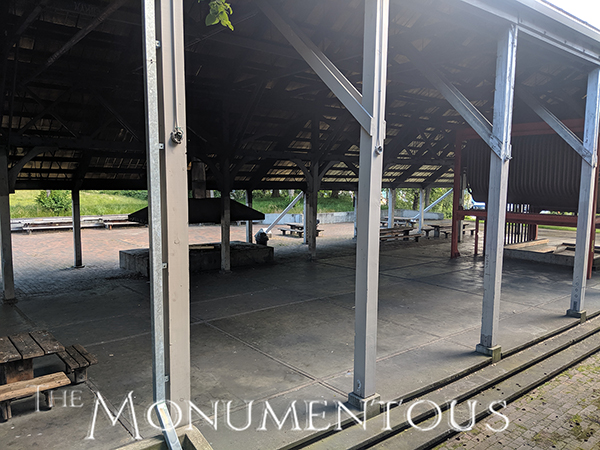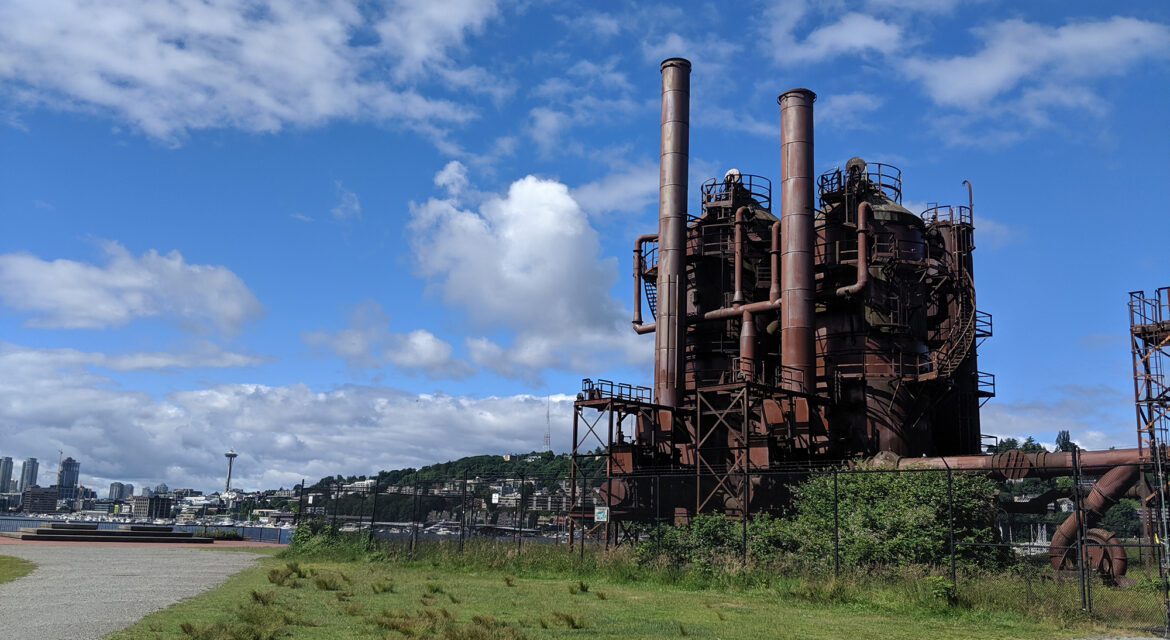 Sitting on the site of the former Seattle Gas Light Company gasification plant, Gas Works Park in Seattle, Washington is an incredible example of what it means to transform a space while also retaining and celebrating the history associated with it. With a design that incorporations the leftover gas plant equipment in it, Gas Works Park highlights what it can mean to utilize existing infrastructure to create entirely new experiences for audiences.
Sitting on the site of the former Seattle Gas Light Company gasification plant, Gas Works Park in Seattle, Washington is an incredible example of what it means to transform a space while also retaining and celebrating the history associated with it. With a design that incorporations the leftover gas plant equipment in it, Gas Works Park highlights what it can mean to utilize existing infrastructure to create entirely new experiences for audiences.
The Only Remaining Gasification Plant in the United States
 A gasification plant began to operate on the north shore of Lake Union in Seattle in 1906, during which time it served as a major source of energy for residents throughout the city. Eventually, the city would move to alternative energy sources and the plant was closed in 1956, leaving behind large structures and soil that was unusable due to toxins. It was bought by the city of Seattle for park purposes in 1962, but these structures and soils created a challenge.
A gasification plant began to operate on the north shore of Lake Union in Seattle in 1906, during which time it served as a major source of energy for residents throughout the city. Eventually, the city would move to alternative energy sources and the plant was closed in 1956, leaving behind large structures and soil that was unusable due to toxins. It was bought by the city of Seattle for park purposes in 1962, but these structures and soils created a challenge.
While some wanted to haul off the structures and soil, landscape architect Richard Haag wanted to both reimagine and restore the space. He made a plan to recycle the buildings, production structures, machinery, and even the ground itself. The most toxic materials were put in a large pile and capped with 18 inches of hard-packed clay. His efforts culminated in the opening of the park in 1976.
Added to the National Register of Historic Places in January 2013, the structures and machinery in Gas Works Park literally powered an industrial age that changed the world. Over 15,000 gas plants were built across the United States, but Gas Works Park is the only one that still exists in any discernable manner. This history and significance is just part of the reason it has become a hub of activity for both residents and visitors.

From Boiler House to Community Hub
 Gas Works Park purposefully retains most of the gasification plant’s original structure but the entire space has been totally transformed. The towers are the most notable feature of the park, although they are off-limits to visitors. The former exhauster-compressor building now serves as a children’s play barn while what used to be a boiler house is now a shelter with picnic tables and grills. Gas Works Park also has reservable picnic areas while visitors can also schedule an outdoor ceremony like weddings and events.
Gas Works Park purposefully retains most of the gasification plant’s original structure but the entire space has been totally transformed. The towers are the most notable feature of the park, although they are off-limits to visitors. The former exhauster-compressor building now serves as a children’s play barn while what used to be a boiler house is now a shelter with picnic tables and grills. Gas Works Park also has reservable picnic areas while visitors can also schedule an outdoor ceremony like weddings and events.
The transformation and evolution of the space is evident everywhere. Kite Hill is the result of Haag’s efforts to restore the soil and has become one of the park’s more popular features. The sundial at the top of the mound was created by two local artists, Chuck Greening and Kim Lazare. The deck that faces downtown Seattle allows visitors to sit and relax to take in the view, while the greenery that fills the space provides room for countless activities, some of which are organized throughout the year.
Gas Works Parks is host to events like the annual 4th of July celebration. Throughout the day, guests can enjoy food vendors, live entertainment and exhibit booths. The park also features free concerts and athletic competitions on a regular basis, while kite-flying and live-action roleplaying tournaments are a few of the other activities that take place in the park. The park is also the traditional endpoint of the Solstice Cyclists and the start point for Seattle’s World Naked Bike Ride.
 These activities are in addition to the jogging, walking, relaxing and playing that takes place on the paths, playgrounds, and beachfront located throughout Gas Works Park every day of the year. This variety of ways to engage with the space has created a sense of community that is connected to the past and future of the entire city.
These activities are in addition to the jogging, walking, relaxing and playing that takes place on the paths, playgrounds, and beachfront located throughout Gas Works Park every day of the year. This variety of ways to engage with the space has created a sense of community that is connected to the past and future of the entire city.

Converting a Site to Create a Legacy
 One of the most popular free spaces in Seattle, Gas Works Park has gained national and international standing as a prototype for industrial site conversions. Other cities have similarly converted buildings and even elevated railroads, highlighting what it can mean to transform a space without discarding what made it unique and significant in the first place.
One of the most popular free spaces in Seattle, Gas Works Park has gained national and international standing as a prototype for industrial site conversions. Other cities have similarly converted buildings and even elevated railroads, highlighting what it can mean to transform a space without discarding what made it unique and significant in the first place.
Featured in countless maps and guides to the city, Gas Works Park is recognized as an essential element of the modern city. By enabling this transformation in a way that connects communities from multiple eras of Seattle, Gas Works Park has come to represents a legacy that will continue to resonate with residents and visitors.


